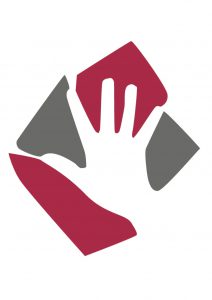DEQUERVAIN’S TENOSYNOVITIS
This is pain on the thumb side of the wrist resulting from inflammation of the lining of the tendons that allow the thumb to be pulled away from the rest of the hand. There are often two (Abductor Pollicis Longus and Extensor Pollicis Brevis) and occasionally up to four tendons that fulfil this role. They pass under a strap (extensor retinaculum) around the wrist that normally prevents these tendons from sliding out of position. The inflammation of the tendon lining makes it difficult for the tendons to move under this strap producing pain.
WHAT CAUSES IT?
The cause for this condition is unknown. It is frequently seen in new mothers and with individuals whose jobs require repeated grasping movements. It can however follow wrist injuries and is occasionally found in association with inflammatory conditions such as rheumatoid arthritis.
WHAT ARE THE SIGNS AND SYMPTOMS?
Pain over the thumb side of the wrist, particularly on movement of the thumb, is the norm. The pain can travel up the forearm and the wrist is often swollen.
HOW IS IT DIAGNOSED?
A detailed history and examination is often all that is required to make the diagnosis. An Ultrasound scan may be requested to assess the severity of the condition and when the diagnosis is unclear.
HOW IS IT TREATED?
The vast majority of patients will achieve relief with non-operative treatment. This treatment includes avoiding activities that produce symptoms, splintage and anti-inflammatory medication. This is often in conjunction with hand therapy where exercises promoting gliding of the tendons help with symptoms. Failing this, steroid injections can provide long-term pain relief in up 60% of patients. It is only after the failure of these measures that an operation becomes necessary.
WHAT DOES THE OPERATION INVOLVE?
The operation involves the release of the strap containing the tendons to the thumb. This is performed as a day case procedure and normally under local anaesthetic.
AFTERCARE
Following the operation you will normally have a bulky dressing covering your wound for 48hours. This is then replaced with a sticky dressing at 48hours until 10 days following your operation. The stitches will dissolve and do not require removal.
RETURN TO WORK
This depends on the nature of your work. For a sedentary occupation the time off is normally 2 weeks. For a manual occupation this can be as long as 6 weeks.
DRIVING
It is normally safe to drive within 6-7 days of your operation but can take up to 2 weeks before you are completely comfortable to start driving.
RETURN TO SPORT
This depends on the intensity of the sport but in most cases a return by 6 weeks is the norm. However more physically demanding sports can require as much as 3 months off.
COMPLICATIONS
Like with any surgery there are a number of small risks associated with this operation.
Infection (1%) is a risk with all surgery. In the majority of cases these are infections around the wound and can be treated with a course of antibiotics. The more unusual deep-seated infections however can require admission to hospital and surgery to clean the wound out if necessary.
Swelling and Stiffness can remain for many months following surgery. It is important to elevate the limb and keep all joints that are not immobilised with a splint, active.
Scar Sensitivity is often a problem with surgery in the hand, particularly the palm. This is often self-limiting and daily massage of the scar can shorten the duration of the symptoms. The sensitivity does settle is all cases with time.
Nerve Injury is a potential but very rare risk with this surgery. Often the nerves at greatest risk are the nerves supplying feeling to the back of the hand on the thumb side. An injury to these nerves may result in an area of numbness that is not often troublesome. However a neuroma (swollen cut end of the nerve) can occasionally form causing pain and may require further surgery.
Recurrence is an unusual complication. You may however find that the symptoms recur some time after the original operation having completely settled initially. In this rare event a second operation may be necessary.
Complex Regional Pain Syndrome is an extremely rare (1%) complication that can follow any injury or surgery to a limb. In this situation the nerves in the arm over-react to the point where the hand becomes very painful, swollen and sensitive. This condition does improve with time but can be problematic for many months (see section on Complex Regional Pain Syndrome).
